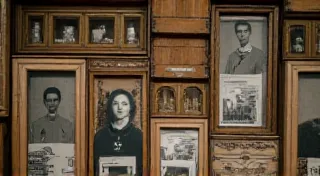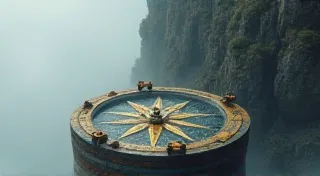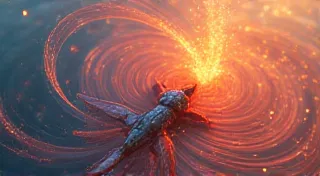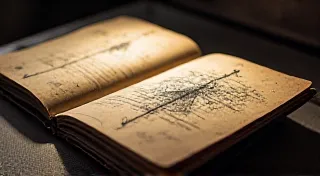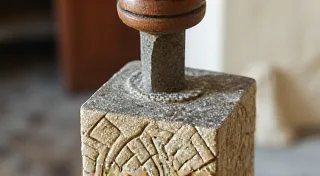Forgotten Board Games: Reviews, Rules, and Historical Information
Welcome to a haven for those who cherish the echoes of tabletop history. Here, we delve into the fascinating world of board games, exploring the obscure, the out-of-print, and the often-overlooked treasures of gaming’s past. If you're a collector, a historian, or simply someone with a fondness for the unique charm of vintage games, you're in the right place. We’re especially passionate about exploring gaming history – understanding how these games fit into the broader cultural landscape.
Rediscovering Lost Worlds
The landscape of tabletop games is vast and ever-changing. While new releases dominate headlines and social media feeds, countless gems have faded into obscurity. These forgotten board games represent more than just cardboard and plastic; they are time capsules, offering glimpses into the cultural trends, design philosophies, and even the social dynamics of bygone eras. Our mission is to rescue these stories from the dustbins of history and breathe new life into their legacy, offering valuable insights into gaming history.
It’s easy to get swept up in the excitement of current releases, but a deeper understanding of how games evolved requires looking back. Many modern mechanics and design concepts have their roots in these lesser-known titles. Understanding these origins reveals a rich tapestry of innovation and inspiration. For instance, did you ever wonder how color palettes influence gameplay? Our article on Chromatic Echoes: How Color Palettes Defined a Generation of Board Game Aesthetics explores this fascinating connection, demonstrating how gaming history is intertwined with artistic trends.
The disappearance of a game is often linked to more than just a lack of popularity. Limited print runs, shifting market trends, and even unforeseen design flaws can contribute to a game's demise. Often, understanding the context of these games – their place in gaming history – is crucial to appreciating why they were abandoned.
Unearthing the Stories Behind the Games
Our exploration extends beyond simple reviews and rule explanations. We’re interested in the why behind these forgotten board games. Who were the people involved in their creation? What were their motivations? What lessons can we learn from their successes and failures? This deeper understanding is essential to appreciating gaming history.
Too often, the contributions of individuals are lost to time. The history of board games isn't just about the game itself, but about the often-anonymous individuals who poured their creativity and skill into its creation. We've dedicated a significant portion of our efforts to uncovering these stories. From the game reviews you've come to expect, to a deeper dive into the people who made it all possible. You may be surprised to discover the names of The Cartographer’s Shadow: Uncovering the Uncredited Game Designers who shaped the landscape of tabletop gaming, a crucial element of gaming history.
Similarly, the artistry of board game illustration often goes unacknowledged. We shine a light on The Silent Architects: Uncovering the Untold Stories of Board Game Illustrators and the visual styles that defined entire eras. The care and precision required to create engaging components also deserves recognition; The Stone Mason’s Legacy: Etching the History of Board Game Components is a look at the often-overlooked world of board game manufacturing and the evolution of playing pieces. Understanding these manufacturing processes adds another layer to understanding gaming history.
Understanding a game's context requires more than just reading the rulebook. Often, a game reflects the social and political climate of its time. We analyze how themes and mechanics can offer unique insights into the societies that birthed them. Our examination of The Obsidian Mirror: Reflections of Society in Forgotten Board Game Themes reveals a surprising depth to these seemingly simple diversions, highlighting how board games can act as historical documents reflecting gaming history.
Delving into the Mechanics and Design
Beyond the people and the stories, we are fascinated by the mechanics that drive these games. Some designs were ahead of their time, while others demonstrated the pitfalls of unchecked ambition. Often, unintended consequences arise from even the most carefully crafted rulesets. These “phantom mechanics” can shape a game’s evolution in unexpected ways. Our article, The Phantom Mechanic: How Unintended Consequences Shaped Board Game Evolution, explores these captivating instances and illuminates a key chapter in gaming history.
We analyze how design trends shift and evolve, influencing both the aesthetic and the gameplay of board games. The Cartographer's Compass: Navigating the Shifting Sands of Game Design Trends charts this constantly changing landscape and places those changes within the broader narrative of gaming history. At times, games failed, and lessons were learned. We dissect the reasons behind these failures and explore the valuable insights that can be gleaned from discarded designs in The Rusting Monolith: Deconstructing the Failures and Lessons from Discarded Games. The evolution of mechanics also extends back, creating a web of inspiration and design influences; take a look at Echoes in the Polyhedral Dice: Tracing Lineage in Tabletop Game Design.
Even abstract games, seemingly devoid of narrative, possess an underlying scaffolding that dictates the player's experience. We analyze the "storyteller's bones" of these designs, revealing the subtle ways in which they guide player choices and shape the overall narrative, providing insight into the evolution of abstract design within gaming history. The Storyteller’s Bones: Analyzing the Narrative Scaffolding of Abstract Board Games explores this hidden dimension.
Sometimes, a game’s success is tied to the communities that embraced it. We explore the history and legacy of these forgotten communities of board gamers, celebrating their shared passion and contributions to tabletop culture. The Guild of Lost Dice: Celebrating the Forgotten Communities of Board Gamers highlights the importance of these vibrant subcultures and their place in gaming history.
Preserving the Legacy
Our ultimate goal is to preserve the legacy of these forgotten board games. We believe that these titles hold valuable lessons for both game designers and players alike. By documenting their history, analyzing their mechanics, and sharing their stories, we hope to keep these treasures from fading entirely from memory, contributing to a richer understanding of gaming history.
The process of decoding older rulebooks can also be challenging, requiring a deep understanding of both the language and the conventions of the time. The Parchment's Whispers: Decoding the Lost Languages of Board Game Instructions provides insights into this often-overlooked aspect of game preservation and its connection to gaming history.
The echoes of these games resonate even in modern design. We are dedicated to helping you discover the roots of your favorite games, and providing a resource for those looking to understand the rich history of tabletop gaming. And sometimes a game’s narrative is the most fascinating aspect; examine The Dream Weaver’s Loom: How Narrative Threads Unravel in Forgotten Games.
Finally, let's not forget the emotional connection people have with these games. It’s more than just cardboard and pieces; these are vessels of memory and nostalgia, representing a unique piece of gaming history. The Clockwork Heart of Nostalgia: Dissecting the Emotional Resonance of Forgotten Games explores this phenomenon.


